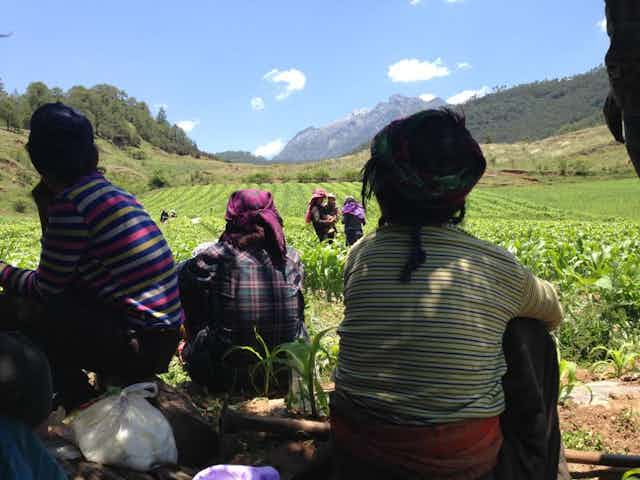From medieval witch hunts in Europe to contemporary “witch doctors” in Tanzania, belief in witchcraft has existed across human societies throughout history. Anthropologists have long been fascinated by the phenomenon, but have struggled to study it with quantitative methods – our understanding of how and why it arises is therefore poor.
But a study we conducted of one Chinese region provided an opportunity to test the most common hypothesis – that witchcraft accusations act as punishment for those who do not cooperate with local norms. According to this theory, witch tags mark supposedly untrustworthy individuals and encourage others to conform out of fear of being labelled. However, some empirical studies have shown that witch labelling instead undermines trust and social cohesion in a society.
Our study is based on 800 households in five villages in south-western China. We examined the social behaviour of those who were labelled with a “witch” tag, and compared it with those who were not. The work, published in Nature Human Behaviour, was the basis of a long-term collaboration between scientists from University College London, the Chinese Academy of Sciences in Beijing and Lanzhou University.
To determine the social networks and cooperation between households, we conducted house-to-house surveys, asking who had children, marriages and partnerships with whom. We also collected data on gift-giving, and on working groups on farms during harvest and planting seasons to see who was helping other households with their farming. All these measures gave rise to four social networks between households based on kinship, reproductive partners, gifts exchanged or farm work.
Magic poison
While in the area, we were occasionally warned not to eat in certain households, as women there were believed to be supernatural “poison givers”. The label they used – “zhu” or “zhubo” – is sometimes also translated as “witch”. It was common knowledge which homes were so labelled and we were surprised to find it accounted for 13% of the households.
The tag was one of the strongest predictors of assortment on social networks. Those from tagged households rarely had children or partnerships with those from untagged households, nor did they exchange gifts or work on each others’ farms very often. However, tagged households were helping each other and reproducing with each other, which mitigated the costs of exclusion from mainstream social networks.
We also played an “economic game” in the villages, where each person was given a small sum of money and asked to donate any proportion of it they wished to the village (to be divided among all the players). We found no evidence that those tagged as “witches” were any less cooperative in this game than any others.
In fact, we found that labelled households were very similar to other households, except the tagged households were more likely to be headed by women and were actually slightly wealthier than average.
We also discovered that the process of acquiring the label was opaque. Even victims often did not know who had started a rumour about them, they may just begin to notice others avoiding them. Some sources report such tags running in the family, with daughters inheriting the status from their mothers. Hence the origin of the slur could have occurred long ago.
Interpreting the results
Anthropologists who believe that the fear of loss of reputation (by witch labelling or other reasons) can be a huge driver of cooperation in the wider community often back their arguments with laboratory experiments using economic games. Such experiments also show that those who punish transgressors can gain reputational benefits themselves.
However real world examples of this are hard to come by. Most studies of witchcraft are not quantitative and do not examine social networks as we have done. While this study suggests there is no evidence that those labelled with this harmful tag were uncooperative, it does not fully explain why such accusations stick in some cases and not in others.
Our conclusion is that witch accusation has evolved from competition between households. Labelling may have become a way for people to get ahead of their rivals and gain a competitive advantage in reproduction or resources. However, the sources of competition may be different in different cases.

There are other explanations that may apply too. All around the world conceptions of witchcraft share many common features. For example, middle aged women are the most common victims, and accusations of poisoning are frequently involved. But there are also many differences. Another idea for the origins of witchcraft denunciations is that they are common when patriarchal institutions are trying to establish dominance over matriarchal ones. This could possibly also apply in this case as Buddhism, the most common religion in the area, is more male-dominated whereas the traditional social structure in the region is “matrilineal”, where descent is usually traced through the female line.
A patriarchal dimension to witchcraft accusations could also explain the prevalence of women as victims both in traditional societies, and even in modern contexts that can resemble “witch hunts”, such as online bullying specifically targeting women.
The more research we do, the closer we can get to understanding and tackling the mechanisms behind these practices that can be devastating for women across the world.

